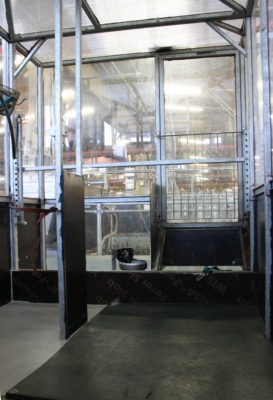Aug 31 2016
In the future, the breeding of the climate-friendly cow can be speeded up by using genetic information. A recent study identifies areas in the cow’s genotype which are linked to the amount of methane it produces. Cows subjected to study did not unnecessarily chew their cuds when being placed in glass cases.
 Metabolic chamber at Luke’s experimental cowshed in Minkiö. (Photo: Olga Pihlman)
Metabolic chamber at Luke’s experimental cowshed in Minkiö. (Photo: Olga Pihlman)
Of the greenhouse gases produced by humans, 16 per cent consists of methane, of which one third originates in cattle production: more than one billion cattle graze the planet, and each of them emit around 500 litres of methane every day, thereby warming up the climate.
Could it be possible to produce a cow with lower methane emissions through the means available for breeding? The genotype and feed affect a cow’s microbial make-up and functioning. Microbes in the cow’s intestine and rumen on their part play a key role in the functioning of the cow’s entire biological system. “A similar interaction was previously detected in humans,” says Johanna Vilkki, professor at Luke.
As part of a project named RuminOmics, led by the University of Aberdeen and funded by the EU, the Natural Resources Institute Finland, in collaboration with ten other European research institutes, investigated the interaction between a ruminant’s genotype, feed, and the microbial make-up of the rumen, examining the role these factors played in the energy-efficiency of dairy cattle and their methane emissions.
Significant differences in methane production between individuals
Under the RuminOmics project, one thousand cows were examined in different European countries. One hundred Ayshire cows visited a metabolic chamber, located in Luke’s Jokioinen cowshed, in which their methane emissions were measured. In addition, their digestion, production characteristics, energy-efficiency and metabolism, as well as their microbial make-up, were monitored.
Substantial differences in measurement results were found between different farms and countries, as feeding practices, for example, differ from each other a great deal. It was expected that Finnish and Swedish cows would produce more methane than cows in other countries. This is attributable to their feed which is dominated by silage, not by the climate.
“If the methane emissions from cows are to be reduced, a straightforward approach according to which only cows with low emissions are left in the livestock is perhaps not the best solution. On the contrary, the results indicate that many cows with low methane emissions are inefficient due to the fact that they are unable to make use contained in fodder.
Relative methane emissions of a cow per production unit, kilo of milk or beef are reduced if the production level or production age are increased.
Therefore, it makes sense, from an ethical and environmental perspective, to favour cows with an excellent production capability and keep them in production for as long as possible,” Vilkki says by way of recommendation.
Genes reveal a cow with low emission
Information available in the near future will indicate whether or not cows with low emissions and a good production capability can be selected for breeding on the basis of genetic data. The study identified areas in the cow’s genotype, the variation of which was linked to the amount of methane produced per kilo of milk produced.
“We will investigate whether these genes affect the variation in the microbial make-up of cows’ rumen or other characteristics of cows such as the size of their rumen, production level of capability to use fodder.”
Reduced emissions and healthier milk
Cows’ fodder contains a great deal of unsaturated fatty acids, but the microbes in the rumen transform them into saturated fatty acids. Therefore, approximately 70 percent of the fats in milk comprises solid fats.
The make-up of fatty acids in the cows studied was measured, and its connection to the microbial make-up of the rumen was examined. Further research will reveal whether a cow’s fatty acid make-up indicates the cow’s methane emissions.
“By changing the feed of cows, we seek to reduce the proportion of microbes causing methane emissions, the amount of which is also related to the amount of saturated fatty acids in milk. Using this method, we can perhaps also change the nutritional make-up of milk in a healthier direction,” Vilkki remarks.